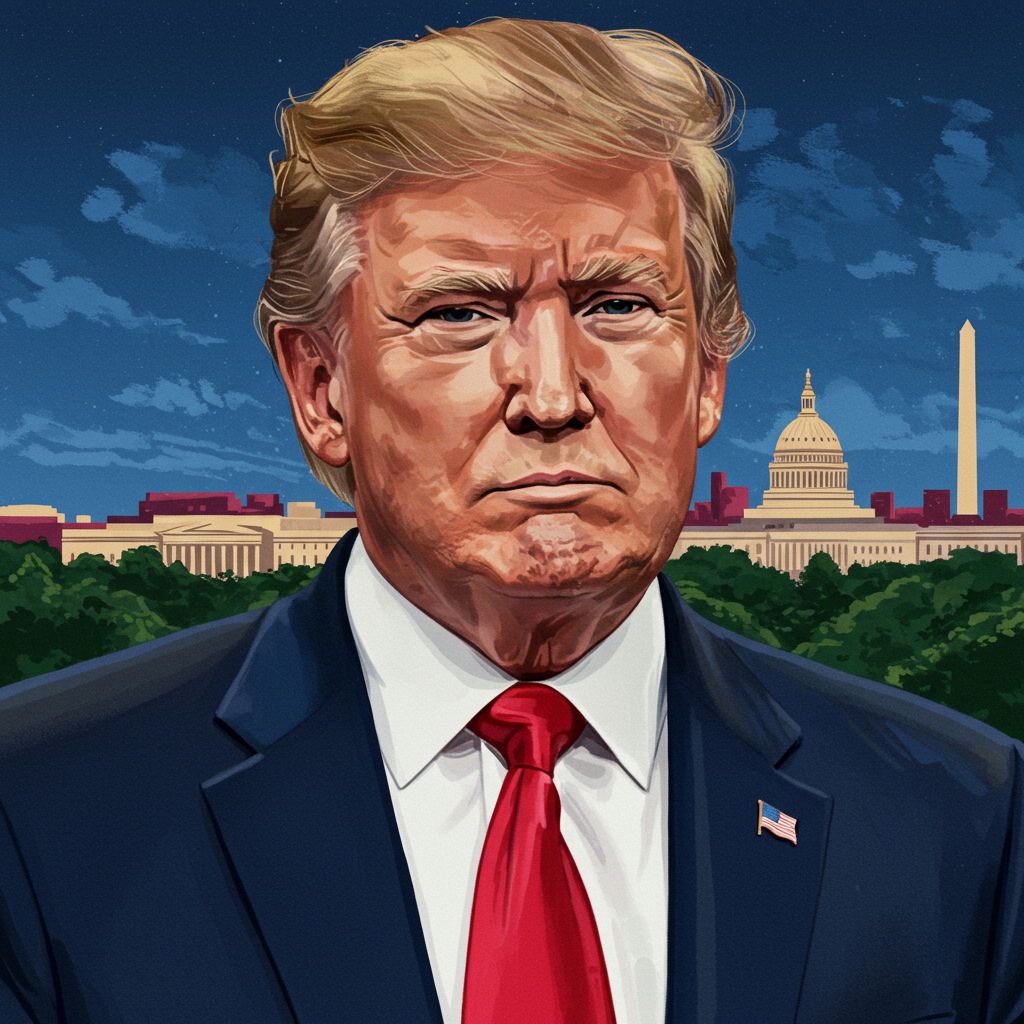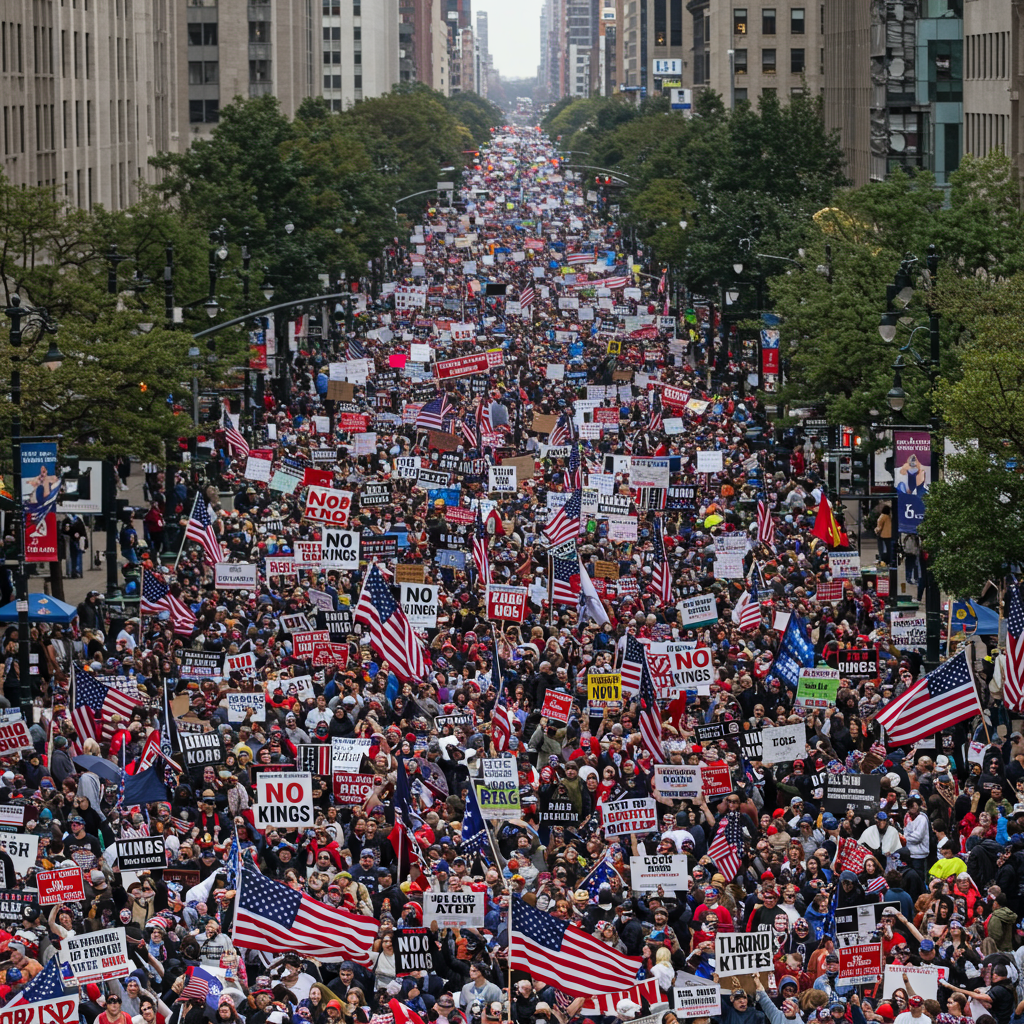Washington D.C. finds itself at the center of a contentious federal push, as former President Donald Trump outlines aggressive plans to overhaul the nation’s capital. His directives, initially broadcast via Truth Social, target homelessness and crime, signaling a dramatic shift in urban governance with immediate and far-reaching implications. This strategic intervention seeks to “reclaim” the capital, but it faces scrutiny regarding its factual basis and potential impact on D.C.’s established home rule.
A Bold Vision for the Capital
President Trump’s recent pronouncements detail a no-nonsense approach to what he describes as a “horribly run” and “crime-ridden” Washington D.C. His overarching goal, articulated at an upcoming press conference, is to transform the city into one “safer and more beautiful than it ever was before.” At the core of this strategy are two distinct directives: the swift removal of homeless individuals and the immediate incarceration of criminals. “The Homeless have to move out, IMMEDIATELY,” Trump stated, adding that while “places to stay” would be provided, these would be “FAR from the Capital.” For those deemed criminals, the message was equally stark: “We’re going to put you in jail where you belong.” He emphasized that these changes would unfold “very fast,” drawing parallels to his administration’s border policies.
Trump’s long-standing dissatisfaction with Washington D.C.’s local governance, currently overseen by an elected government under congressional authority, has fueled his threats of a federal takeover. He has consistently chafed at this arrangement, suggesting the White House should wield ultimate authority over the city’s operations.
Federal Force Meets Urban Realities
To implement his vision, President Trump has already initiated steps signaling a robust federal intervention. Weeks prior to his detailed announcements, he signed an executive order designed to streamline the removal of individuals experiencing homelessness from city streets. This order, aimed at “restoring public order,” directed placement in “long-term” institutions for treatment.
Furthermore, a multi-agency federal presence has become a visible component of this crackdown. Officials from over 15 agencies, including the U.S. Secret Service, Department of Homeland Security, Immigration and Customs Enforcement (ICE), FBI, U.S. Capitol Police, Metropolitan Police Department (MPD), and the U.S. Marshals Service, have been deployed. These officers, operating in marked units, concentrate their efforts in heavily trafficked areas, signaling a high-profile push to curb crime. An early outcome saw the U.S. Park Police reporting arrests for stolen firearms and illegal drugs with federal support.
Beyond direct deployments, Trump possesses other avenues to exert federal pressure on D.C. Even without fully overturning the city’s home rule, he could deploy the D.C. National Guard, which falls under his direct command, or temporarily assume control of the Metropolitan Police Department. These actions underscore a willingness to bypass or override local authority in pursuit of federal objectives.
Contradicting Narratives: Crime and Homelessness Data
A central contention surrounding Trump’s aggressive stance is the factual basis for his claims. His narrative of Washington D.C. being “totally out of control” and experiencing a rampant “crime spike” is directly contradicted by official statistics. According to police data, violent crime in Washington D.C. actually fell by 26 percent in the first half of 2025 compared to the previous year. Furthermore, Justice Department figures predating Trump’s second term indicated that the city’s crime rates in 2024 were already at their lowest in three decades. Robberies, homicides, and assaults have all seen a decline when compared to 2024 data, as tracked by the MPD. While there was a report of an MPD commander being placed on administrative leave over accusations of data manipulation, the prevailing official statistics indicate a downward trend.
Similarly, Trump’s portrayal of widespread homelessness requiring drastic relocation is also inconsistent with government figures. While thousands do experience homelessness in Washington, D.C., the city ranks 15th among major U.S. cities by homeless population, and these figures are actually down from pre-pandemic levels. This data suggests that the severity described by Trump as justification for his “far from the Capital” relocation plan may be overstated.
Preserving D.C.’s Home Rule and Local Concerns
The specter of a federal takeover directly challenges D.C.’s home rule, which grants residents the right to elect their mayor and city council members. Overturning this autonomy would necessitate an act of Congress, a significant legislative hurdle. Despite this, Trump’s consistent threats to federalize the city raise profound questions about local governance and self-determination.
D.C. Mayor Muriel Bowser, a Democrat, has directly refuted Trump’s claims of escalating crime. Appearing on MSNBC, she asserted, “We are not experiencing a crime spike,” and dismissed any comparisons of D.C. to a “war-torn country as hyperbolic and false.” Local leaders and civil rights advocates express concern that heightened federal enforcement, especially with multi-agency deployments, could lead to issues of accountability and civil rights violations. The deployment of federal agents, particularly those from agencies like ICE, raises alarms about potential racial profiling, as seen in other federal operations.
A Pattern of Federal Intervention
The current federal focus on Washington D.C. is not an isolated event but aligns with President Trump’s established pattern of seeking to exert federal authority over predominantly Democratic-run cities. Just weeks prior to these D.C. pronouncements, his administration deployed California’s military reserve force into Los Angeles to quell protests related to immigration raids in mid-2025. This aggressive push for a “Mass Deportation Program” targeted “Democrat-controlled” cities like Los Angeles, Chicago, and New York, aiming for a significant increase in arrests.
In Los Angeles, Trump’s deployment of National Guard troops and Marines to guard federal buildings sparked widespread condemnation from local leaders like Mayor Karen Bass and Governor Gavin Newsom, who deemed it an “unprecedented show of power” and an “unacceptable use of the military.” The economic fallout was significant, with the city incurring nearly $20 million in police expenses due to managing protests, and businesses suffering from reduced foot traffic. The pervasive fear within undocumented communities led to instances of self-deportation and reports of racial profiling by agents. This historical context illuminates Trump’s consistent tendency to use federal and military-like forces in urban areas, often based on unsubstantiated claims, to address perceived civic failures. The D.C. crackdown appears to be a continuation of this broader push for centralized control and the assertion of “no Mr. Nice Guy” policies in cities perceived as “hostile to his nationalist impulses.”
Frequently Asked Questions
What is President Trump’s proposed solution for homelessness in Washington D.C.?
President Trump has stated that homeless individuals in Washington D.C. must “move out, IMMEDIATELY.” His plan includes providing “places to stay,” but these designated locations would be “FAR from the Capital.” This directive is part of a broader strategy to “restore public order” and is supported by an executive order making it easier for cities to remove people experiencing homelessness.
How does current D.C. crime data compare to President Trump’s assertions?
Contrary to President Trump’s claims of D.C. being “totally out of control” with a “crime spike,” official police statistics indicate that violent crime in Washington D.C. actually fell by 26 percent in the first half of 2025 compared to the year prior. Furthermore, government data shows that the city’s crime rates in 2024 were at their lowest in three decades, and homelessness figures are down from pre-pandemic levels.
What challenges does President Trump’s D.C. plan pose for city governance?
President Trump’s plan directly challenges D.C.’s home rule, which grants local residents the right to elect their own mayor and council. A full federal takeover would require Congress to overturn home rule, while other measures, like deploying the D.C. National Guard or temporarily commanding the Metropolitan Police Department, bypass local authority. This raises concerns among D.C. officials, including Mayor Muriel Bowser, about accountability, civil liberties, and the autonomy of city governance.
The Path Ahead for Washington D.C.
President Trump’s announced “reset” for Washington D.C. represents a significant federal intervention into local urban affairs. His emphasis on immediate action, combined with the deployment of multi-agency federal forces, underscores a determination to implement his vision of a “safer and more beautiful” capital. However, this aggressive approach is marked by a clear disconnect between the rhetoric of rampant crime and homelessness and the official data reflecting declining trends. The implications for D.C.’s home rule, civil liberties, and the future of federal-local relations remain a critical watchpoint as the situation unfolds. This dramatic federal push will continue to shape the narrative and reality of governance in the nation’s capital.


